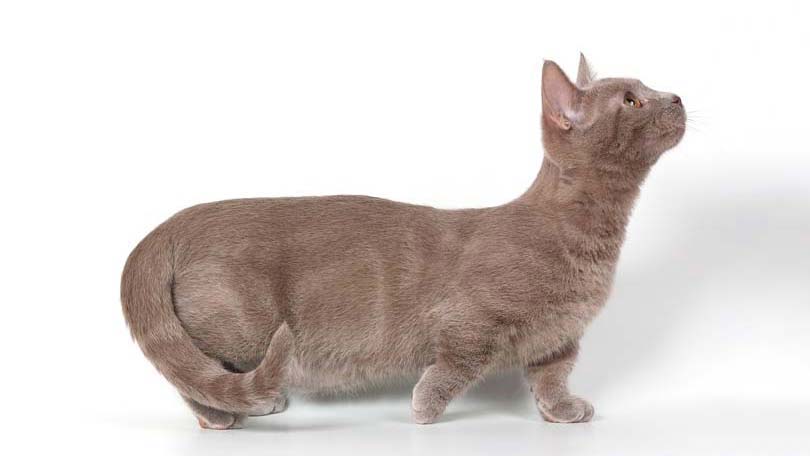
Cat lovers spend a great deal of time considering their choice when they decide to bring home a new cat. Some people bring home every stray under the sun while others look around and decide exactly what cat will bring them the most joy. Buying a purebred cat is similar to buying a purebred dog, with the exception of ease related to finding a reputable breeder.
Dog breeders are easy to find, since dog breeds are so plentiful and there are always interested potential humans for their breed. Cat breeders have to be more selective, as purebred cats are not as popular. In fact, there are plenty of cat owners and cat fanciers who aren’t even aware that purchasing a purebred cat, with the exception of a Siamese cat, is even an option. Many people go about the process without any information at all. It can be a learn as you go process.
There are technically 41 breeds of cats that are bred throughout the United States and Canada. Some breeds have been around for as long as there have been domesticated cats while others have made a much later appearance. Regardless, each breed is distinctive, fresh, and comes with their own positive traits that make them so appealing.
Finding a good, quality breeder is the key to bringing home a healthy, strong, loving kitten. It may take some doing, especially if you are looking to bring home a breed that isn’t bred in your area, but the extra time and energy and money spent will be well worth it. The Cat Fancier’s Association has placed some rather strict guidelines on the development and breeding of all CFA recognized breeds. These guidelines are intended to reduce the risk of over breeding and cat farming, as puppies have faced. So far, in the United States, few cat breeders have been negligent of these regulations, which is why it is highly important to choose the best breeder possible for your new purebred cat.
Many people purchase purebred cats to enter them in the various cat shows sponsored by the CFA. Most people going down this path are already readily familiar with breeder responsibilities and the breeder’s general requirements. However, newcomers to the scene might need a little more education when buying a purebred cat.
Selecting the Right Purebred Cat for You
Choosing the right purebred takes time and a little knowledge. Some cats are definitely more affection while others are much more aloof. Some of these traits are inherent to the breed while others are simply personality characteristics. While the Ragamuffin breed only qualifies for miscellaneous categories concerning cat shows, their demeanors are far more personable than many cat breeds. If you’re looking for a well bred, healthy friend, this may be the direction to go. If shows catch your eye, then you might be looking at breeds like Persians or Orientals.
For some people it is important for visitors and friends to know on sight that their cat is a purebred cat. Since the majority of purebred cats resemble the American Shorthair housecat, it can be difficult to discern without previous knowledge. Yet some breeds are unmistakably purebred cats, like the Maine Coon or the Russian Blue.
Purebred cats offer some advantages over the locally adopted shelter cat. A health history of the blood lines is readily available to anyone interested enough to ask. This can mean the difference between a cat with long, healthy years and one that struggles with a variety of serious health diseases common in cats. Breeds with a tendency for specific diseases are readily known, which can make the purchase of a cat a more informed decision.
Behavioral traits are also more likely to follow suit, considering the breed and the blood lines. Some people prefer a cozy cuddler while others prefer a playful jokester. These traits can be distinguished throughout the breeds as well. Buying a purebred cat means bringing home a little mewling bundle that you can take an educated stab at their impending personality.
Most purebred kittens are not released to their new humans until they have reached twelve weeks, rather than the customary eight weeks that most kittens leave their mother. The twelve weeks mark seems to signify a better state of kitten health at the time of departure. This is in fact true for all kittens, but the purebreds are the ones with the humans watching out for their best interests. Alley cats and the like are usually born of accidental nature, and the humans involved are typically relieved just to find them homes. They often try to do so when the little ones are at their cutest, which is often around seven to eight weeks old. Some humans will separate the kitten from the mother as early as six weeks. Evidence has proven that the twelve week mark is a much more suitable time for the separation to occur.
Naturally, anyone who is willing to bring a kitten into their family is going to want what is best for the kitten. This is why taking your time and finding the right breed for you and your family and considering the pros and cons of each breed is so heavily rewarded when you are finally buying a purebred cat. More and more cat lovers are realizing the benefits to purebred kittens, and more families are making the switch for either show purposes or just for the pleasure of owning one of these remarkable cats.
